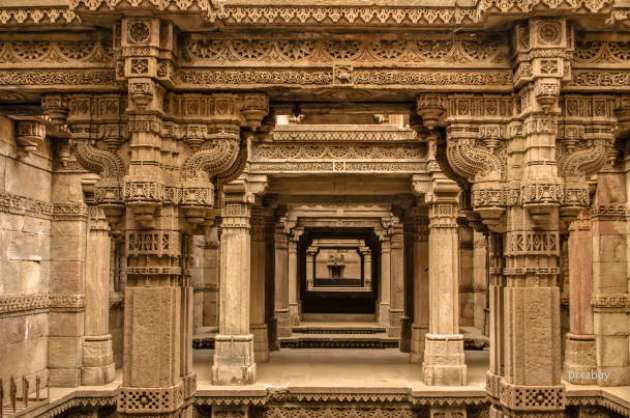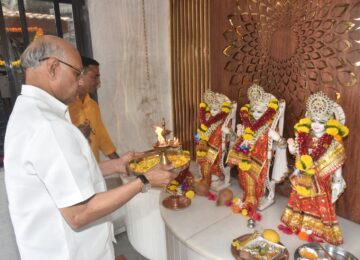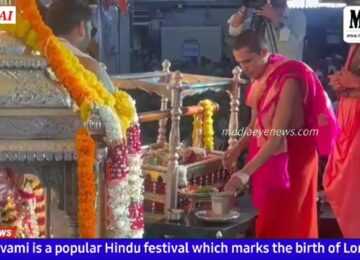Anupama Nair
www.mediaeyenews.com
The World Heritage Day or the International Day of Monuments and Sites is celebrated annually all over the world in April. This year the aim was to create an awareness about the diversity of cultural heritage and the work that must be done to preserve our history. World Heritage Day was first observed by the United Nations Educational, Scientific, and Cultural Organization (UNESCO) in 1964. The Indian Sub-continent is famous all over the world for its rich cultural history and monuments that attract lakhs of tourists every year. We have inherited many popular landmarks, many of which are also the ‘World Heritage Sites’. “The Sub-continent has a long list of kings and emperors, wars and conquests, cultures, and faiths that have made the country what it is today”.
There are many sites worth visiting on this World Heritage Day:
The site of Rakhigarh is one of the five known biggest townships of the Harappan civilization in Indian sub-continent. Other four are Harappa, Mohenjodaro and Ganeriwala in Pakistan and Dholavira (Gujrat) in India. Five inter-connected mounds spread in a huge area form the Rakhigarhi's unique site. Two mounds, out of five, were thickly populated. This site was excavated by Shri Amarendra Nath of Archeological Survey of India.The archaeological excavations revealed mature Harappan phase represented by planned township having mud-brick as well as burnt-brick houses with proper drainage system. “The ceramic industry represented by red ware, which included dish-on-stand, vase, jar, bowl, beaker, perforated jar, goblet and handis. Animal sacrificial pit lined with mud brick and triangular and circular fire alters on the mud floor have also been excavated that signifiest the ritual system of Harappans. A cylindrical seal with five Harappan characters on one side and a symbol of an alligator on the other is an important find from this site”.
Other antiquities included blades, terracotta and shell bangles, beads of semi-precious stones, terracotta, shell and copper objects, animal figurines, toy cart frame and wheel of terracotta, bone points, inscribed steatite seals and sealings. The excavations have yielded a few extended burials, which certainly belong to a very late stage, may be the medieval times
Hampi is an ancient village in the state of Karnataka. It’s dotted with numerous ruined temple complexes from the Vijayanagara Empire. On the southern bank of the River Tungabhadra is the 7th Century Hindu Virupaksha Temple, near the revived Hampi Bazaar. A carved stone chariot stands in front of the huge Vittala Temple site. Daroji Bear Sanctuary is home to the Indian sloth bear.
Khajuraho is an ancient city known for magnificent temples and its intricate sculptures located in the state of Madhya Pradesh. It was built by the Chandela Dynasty, and the UNESCO site of 'Khajuraho Group of Monuments' is famous for its Nagara-Style architecture and graceful sculptures of deities. The splendor of the intricate statues is one of the reasons that makes it a popular site to visit among tourists.
It was built between 950-1050 AD and these temples represent various forms like meditation, spiritual teachings, relationship, through stimulating art. The temples are famous for its craftsmanship that consist of splendid demonstrations of fine sculptures and exceptional architectural skill, making them one of the most stunning UNESCO World Heritage Sites in India. These temples are divided into three groups — Eastern, Western and Southern. “Beautiful, detailed and expressive, the sculptures of the Khajuraho temples will leave you in awe and wonder”.
Murud Janjira is the local name of a famous fort and tourist spot situated on an island just off the coastal town of Murud, in the Raigad district of Maharashtra. The name of the fort is a con-catenation of the Konkani and Marathi words, "morod" and "Janjiri". The word "morod" is peculiar to Konkani and is absent in Marathi. Murud-Janjira Fort is situated on an oval-shaped rock off the Arabian Sea coast near the port city of Murud. Janjira is considered one of the strongest coastal forts in India.
The fort has 26 artillery towers which is still intact. There are many cannons of native and European make rusting on the towers. Now in ruins, the fort in its zenith was a full-fledged living fort with all the necessary facilities, e.g., barracks, quarters for officers, two small 60-foot-deep fresh water ponds etc. On the outer wall flanking the main gate, there is a sculpture depicting a tiger-like beast clasping elephants in its claws.
Despite their repeated attempts, the Portuguese, the British and the Marathas failed to subdue the power of the Siddis, who were themselves allied with the Mughals. The Marathas led by Chhatrapati Shivaji Maharaj attempted to scale the 12-meter-high (39 ft) granite walls, however, he failed in all his attempts. His son Sambhaji Maharaj also attempted to tunnel his way into the fort but was unsuccessful in all his attempts. He built another sea fort in 1676, known as Padmadurg or Kasa fort, to challenge Janjira. It is located north-east of Janjira, and took 22 years to build and is constructed on 22 acres of land.
Jallianwala Bagh is the symbol of sacrifice made during India’s Independence Struggle. The Jallianwala Bagh massacre, also known as the Amritsar massacre, took place on the Baisakhi Day i.e., 13 April 1919, when General Reginald Dyer ordered troops of the British Indian Army to fire their rifles into a crowd of unarmed Indian civilians, in Jallianwala Bagh, Amritsar killing thousands and injuring many more. A visit of Jallianwala Bagh after all these years leaves me in disbelief how a human being can order the killing of thousands of men, women and children. It is said the Shaheed-e- azam Bhagat Singh visited Jallianwala Bagh as a young boy and swore to free his motherland from the British rule. Even after 103 years my mind is filled with sorrow when I see in my mind’s eye the innocents try to save their lives from the bullets of the British soldiers, majority of whom where surprisingly Indians.
The interior of Jallianwala Bagh has been revamped as the sculpture emerged from the newly-plastered walls flanking the narrow alley. The beautification of the site of the Amritsar massacre of 1919 is a means of modernizing the emotional reminder of the incredible sacrifice made by the Indians to win our freedom.
Spread across an area of 60 acres, Brindavan Gardens is at the bottom of the Krishnaraja Sagara Dam (KRS), across the river Cauvery. Modelled on the Shalimar Gardens of Kashmir, the garden entices visitors with its lush green lawns, terraces, flower beds, topiary and multihued fountains. Today, the Brindavan Gardens is world-famous for its ethereal beauty and grandeur. An endless expanse of green, dotted with colorful blooms, the terraced gardens are well laid and admired for their symmetrical design. The highlight for visitors, however, is the famed musical fountain which is a water ballet of sorts, with lights and music and is played every evening for the tourists




























